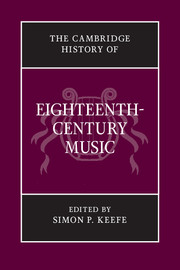Book contents
15 - Performance in the eighteenth century
from INTERLUDE
Published online by Cambridge University Press: 28 March 2011
Summary
Take yourself back in time. It is 1700 and you are in the studio of your teacher, Arcangelo Corelli, in Rome. He has just demonstrated to you a passage from his newly-published Sonate a Violino e Violone o Cimbalo, and now asks you: ‘non l’intendite parlare?’
‘Do you not hear it speak?’ In that question, Corelli captures the essentials of musical performance in the eighteenth century. The composer (who in the eighteenth century was so often also the performer) expected his music to be rendered sensible, expressive, meaningful by being spoken. The performer (whether or not synonymous with the composer) had a duty to make that music speak by reading the signs it contained (whether notated or not) and applying performance conventions to them that differed widely across Europe, and were diversely recorded in vocal and instrumental treatises published throughout the century in many places and in many languages. All such treatises, though, presumed the same thing: that the performer will afford the music a way of being spoken. The instrument or voice was a related tool (combining with the performer’s skill) that allowed the music to speak, and to speak appropriately. Finally, the audience expected the music to speak to them. Music was a kind of Rhetoric.
- Type
- Chapter
- Information
- The Cambridge History of Eighteenth-Century Music , pp. 433 - 454Publisher: Cambridge University PressPrint publication year: 2009
References
- 1
- Cited by



